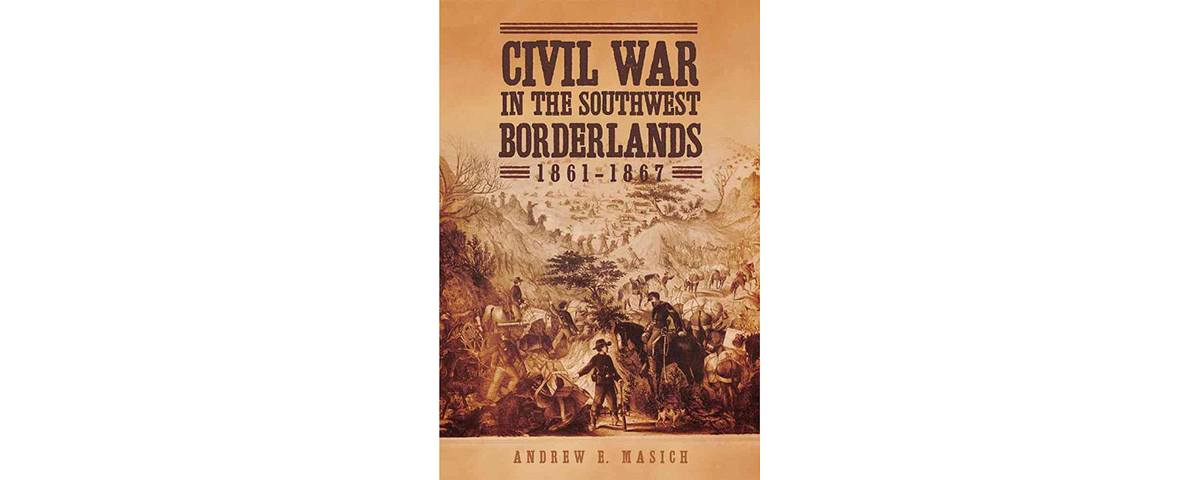Civil War in the Southwest Borderlands, 1861–1867, by Andrew E. Masich, University of Oklahoma Press, Norman, 2017, $34.95
Although the American Civil War is most associated with epic battles in the East and devastating campaigns in the West (then bordered by the Mississippi River), it did extend farther into what was called the Trans-Mississippi Department. Within that vast region the Southwest is worthy of separate treatment for being the mise en scène for what amounted to multiple conflicts and for its sheer complexity. There were indeed clashes between Blue and Gray, especially when Brig. Gen. Henry Hopkins Sibley led a Confederate expedition into New Mexico Territory in 1862. Two months before war broke out between the states, however, a botched attempt to rescue a kidnapped boy from the wrong Apache band prompted Cochise and his Chiricahuas to embark on a war of vengeance against the whites. Fighting between numerous other American Indian tribes and Americans of either uniform—and frequently between each other—occurred throughout the period. Meanwhile, south of the border, the ouster of Mexico’s republican government and French Emperor Napoléon III’s attempt to prop up a puppet regime under Austrian Emperor Maximilian propelled another civil war until 1867, when the ominous presence of a reunited United States compelled Napoléon to reconsider his violation of the Monroe Doctrine and withdraw his forces—leaving poor Maximilian to his fate before a Juarista firing squad.
In contrast to the other combat zones, it was hard to tell who was fighting whom in the Southwest without a scorecard. In Civil War in the Southwest Borderlands, 1861–1867, historian Andrew Masich aims to provide that scorecard. Accompanying his narrative of the confusing series of events across the region are chapters devoted to the different social and political entities that competed for dominance—Union, Confederate Texan, North American Hispano, Mexican, Indians who primarily farmed, Indians who primarily raided. Familiar names like Kit Carson, John Chivington, Black Kettle and Mangas Coloradas turn up, along with lesser-known but locally important protagonists. Here, however, the individuals are secondary to the political or ethnic entities they represent, each of which gets its fair share of coverage. Civil War in the Southwest Borderlands clarifies the complex relationships that underlay the succession of power struggles from which the United States eventually emerged as the principal winner.
—Jon Guttman





